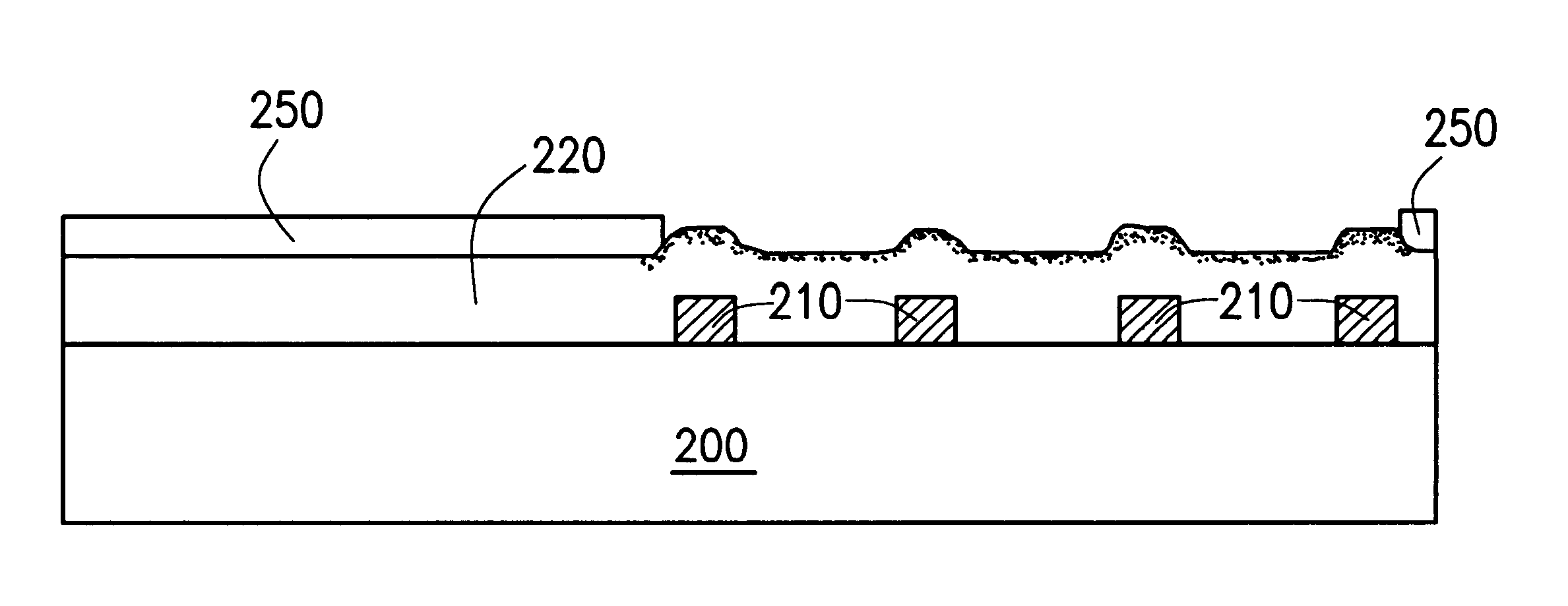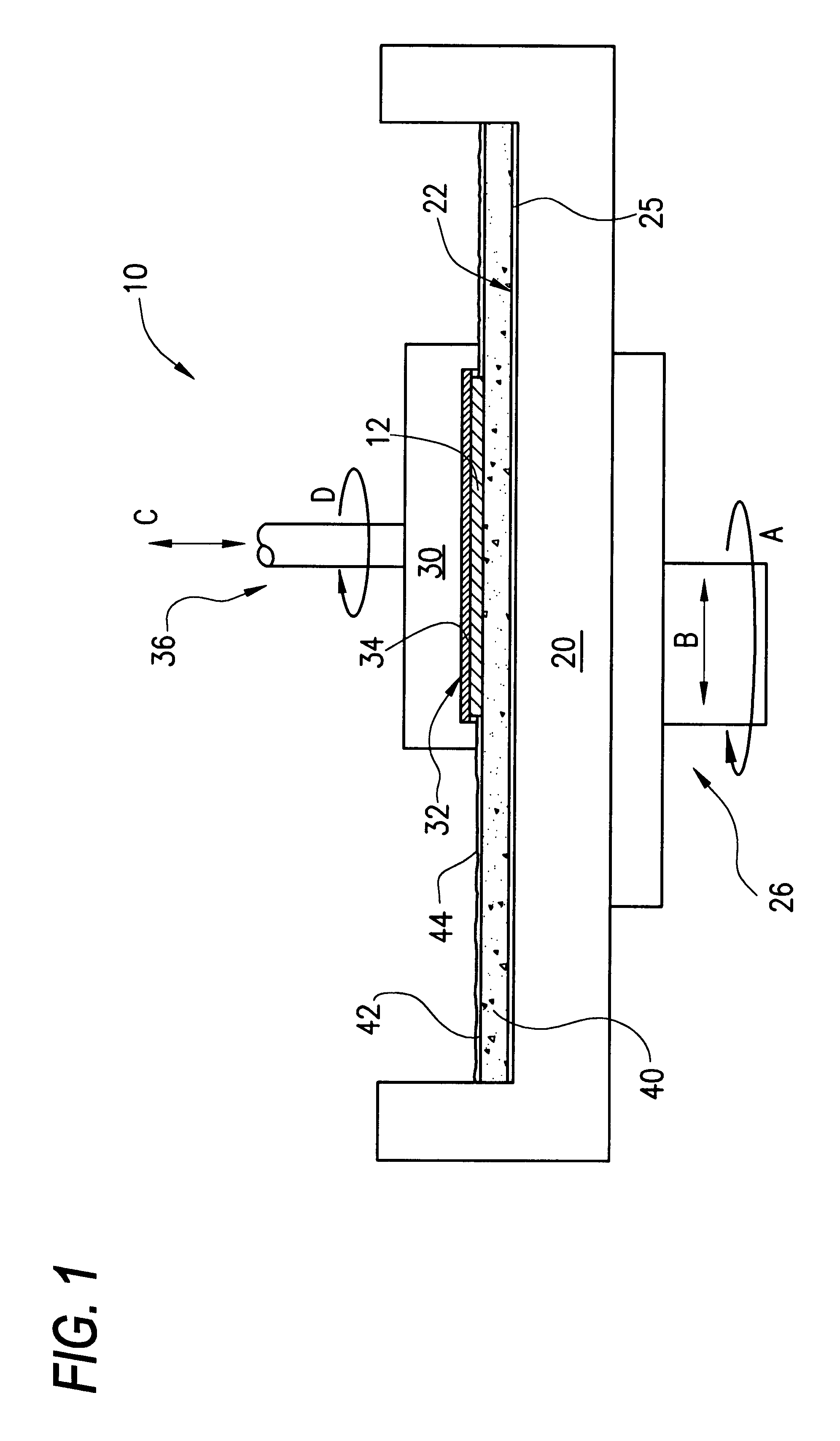Method for improving CMP processing
a technology of cmp and processing method, applied in the direction of basic electric elements, semiconductor/solid-state device manufacturing, electric apparatus, etc., can solve the problems of limited focus depth by the photolithographic system, metal residues during reactive ion etching, and patterning of subsequent layers
- Summary
- Abstract
- Description
- Claims
- Application Information
AI Technical Summary
Problems solved by technology
Method used
Image
Examples
Embodiment Construction
specific exemplary use of the invention is in the formation of shallow trench isolations regions is shown in FIGS. 10A through 10D. A wafer has deposited thereon a layer of oxide, e.g. silicon dioxide, and a layer of nitride. After a trench is defined, as shown in FIG. 10B, the wafer has a layer of silicon dioxide deposited thereon, as shown in FIG. 10B. The silicon dioxide layer is then implanted with phosphorus with a dopant concentration of from about 1.times.10.sup.15 ions / cm.sup.2 to about 1.times.10.sup.17 ions / cm.sup.2 by ion implantation at an energy of about 10 to 100 KeV, shown in FIG. 10c. The doped surface layer of the silicon dioxide layer is then CMP processed, as shown in FIG. 10d. The doped silicon dioxide layer can be removed faster and with less defects than comparable non-doped surfaces. The dosage and energy for the implant can be optimized to achieve the best process conditions. Other dopants as discussed above can also be used.
The above description and accompan...
PUM
| Property | Measurement | Unit |
|---|---|---|
| energy | aaaaa | aaaaa |
| concentration | aaaaa | aaaaa |
| shallow trench isolation area | aaaaa | aaaaa |
Abstract
Description
Claims
Application Information
 Login to View More
Login to View More - R&D
- Intellectual Property
- Life Sciences
- Materials
- Tech Scout
- Unparalleled Data Quality
- Higher Quality Content
- 60% Fewer Hallucinations
Browse by: Latest US Patents, China's latest patents, Technical Efficacy Thesaurus, Application Domain, Technology Topic, Popular Technical Reports.
© 2025 PatSnap. All rights reserved.Legal|Privacy policy|Modern Slavery Act Transparency Statement|Sitemap|About US| Contact US: help@patsnap.com



